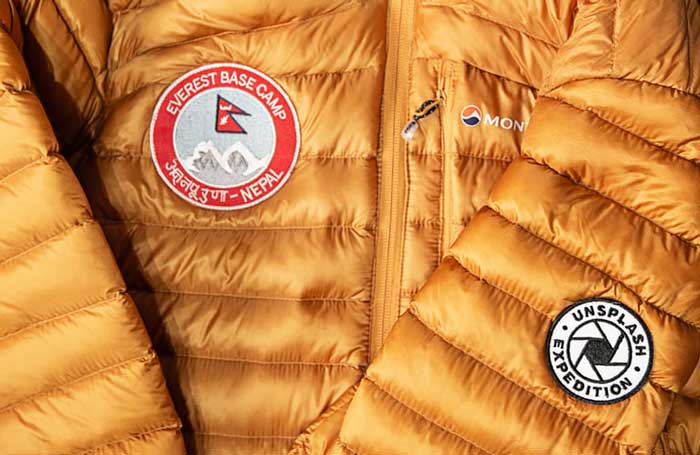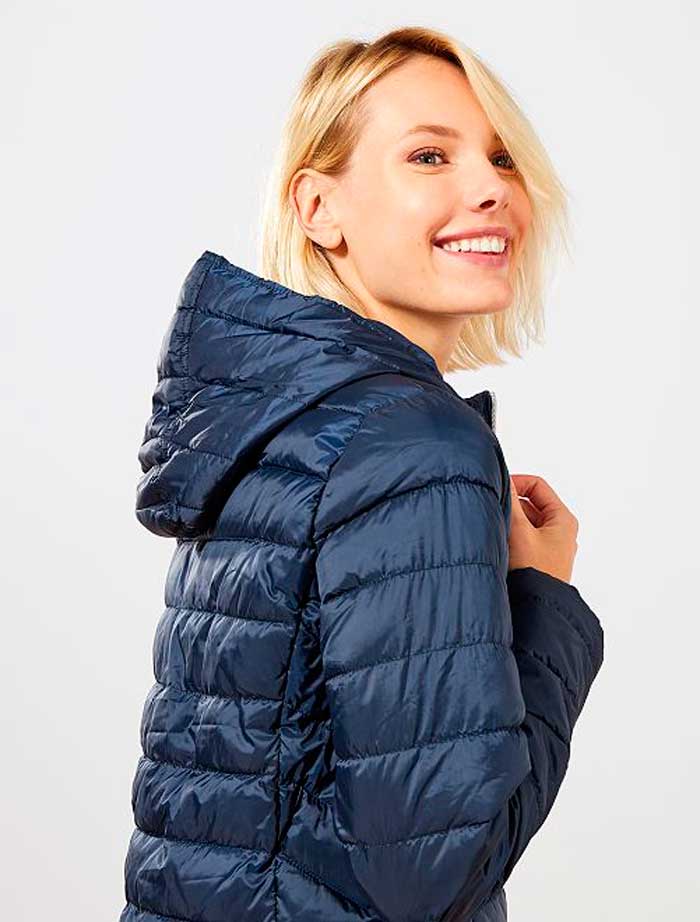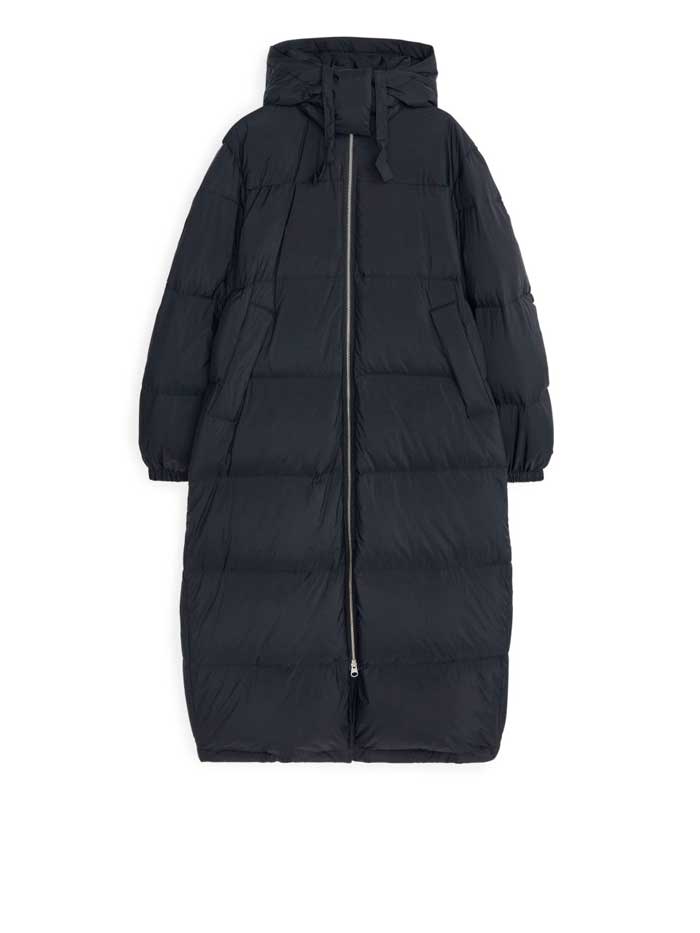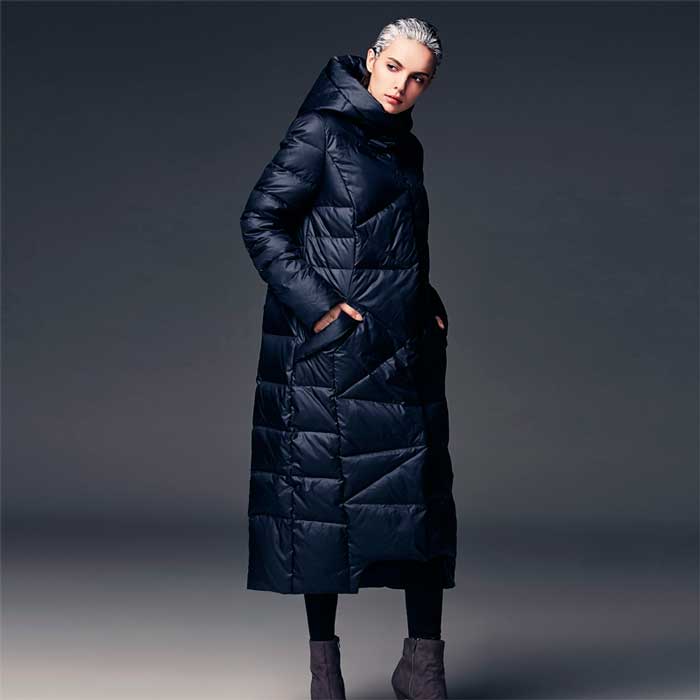The secret of a good puffer jacket is hidden in several criteria: the ratio of down and feather, the quality of materials, the accuracy of the quilting and layering. Approximately the same requirements were imposed on the prototype of a puffer jacket – an ordinary cotton robe that appeared at least two thousand years ago. A typical dressing gown was wrapped and pulled together with a belt; it consisted of two layers of fabric, between which there was a filler made of cotton wool or wool.

From ancient times, both men and women in Central and Southeast Asia wore a long or shortened cotton robe.
A cotton wool gown in China was the usual clothes for all segments of the population. It is too hot there for fur or sheepskin coats, even in the cold season. Besides, the country did not abound with fur-bearing animals. Rich people wore robes made of expensive silk satin, which were decorated with braid, galloon, embroidery, applique. The poor were satisfied with cheap dressing gowns without decorations.
In Japan, especially in the northern islands, winters are rather severe, and there are almost no fur-bearing animals, as in China. The Japanese quilted cotton sheets and futon blankets. They were slept on, they were used instead of blankets, and in a particularly cold time the Japanese wrapped up in a futon, like in a plaid, sitting at home by a brazier with hot coals. A futon, draped over the shoulders, once gave designer Martin Margiela the idea of the 1999 Maison Martin Margiela winter collection.
Mongolian versions of “padded jackets” were shortened: it is more convenient to ride on horseback this way. They were stuffed with cotton very densely, so that they literally did not fold. They protected against winter cold, piercing steppe winds, summer heat and enemy arrows in battle. If a warrior was shot from a bow at close distance, of course, the outerwear could not save him, but he could have been saved from the arrow shot from a long distance.
How did the puffer jackets appear?
In the Nordic countries, the problem was not in the absence of fur for poor people, but in its high cost. Wild animals cost a lot. It was possible to wear a sheepskin of rough dressing, but it was heavy and uncomfortable. It was impossible to create a quilted jacket in Northern Europe in the Middle Ages because cotton was not grown there, and there was no cotton wool, respectively. But the poor Norwegian peasants found the way out, stuffing their “quilted jackets” with bird fluff. This clothing is the direct ancestor of modern puffer jackets.
Feather was not good enough for stuffing jackets, and the Norwegians were the first to discover this. Not any down would go either. For example, chicken feathers and chicken down (poultry does not so much of it) were suitable only for pillows. The northerners, who knew well the habits and appearance of the birds, realized that the best option for stuffing was the eiderdown (Somateria mollissima), with which the birds lined their nests.
At the beginning of the 16th century, the first eider nursery was opened by the decree of Norwegian King Christian IV. Down was no longer harvested in the wild, but the eider duck was specially grown. The lightness and warmth of eiderdown clothes and feather beds were also appreciated in other European countries. Well-made clothes of expensive fabric with this “natural filler” cost almost as much as fur.
However, in modern times, puffer jackets degraded from a prestigious item to peasant clothes. The rapidly developing English textile industry dressed Europe in light and warm woolen cloth. Peter I of Russia patronized trade with the Europeans, so he built a fleet, which affected the export of furs. Later, there was railway communication, stagecoaches and other public transportation in the European countries. For longer trips, it was no longer necessary to tightly wrap oneself in fur.
However, adventure seekers in the Far North and the Far South knew no alternative to puffer clothes. The Norwegian Amundsen and the British Scott simultaneously rushed to the South Pole, but Scott died. One of the reasons was insufficiently warm, heavy and uncomfortable equipment.
The same problems prevented the conquerors of mountain peaks. European climbers sought to conquer the Himalayas, but to drag a fur coat on themselves uphill together with the equipment was too difficult. Sherpas (guides), accustomed to high mountains, wore quilted jackets, and they gave Europeans the right idea.
In 1922, George Ingle Finch, a mountaineer who dreamed of conquering Mount Everest, was the first to put on a mountain eiderdown jacket familiar to Norwegian peasants. Finch was envied by many, but there was a shortage of eiderdown – almost like under Christian IV. They had to look for a more or less suitable replacement – goose down proved to be much cheaper and widely available in all parts of the world. Of course, it was not so light and warm as the down of a polar duck, but it was plentiful and cost a little.
This idea came to American entrepreneur Eddie Bauer. He was a big fan of fishing and once, in 1936, he was carried away by fishing and nearly froze. Miraculously avoiding death from hypothermia, he went on the next fishing trip in a jacket filled with goose down. In 1940, Bauer received a patent for the invention of a down jacket called Skyliner. He quickly became rich and founded the Eddie Bauer brand, which still exists today.
From down to technology
At the beginning of the 21st century, a real technological breakthrough occurred in the production of warm, comfortable, and wear-resistant outdoor clothing: natural filler (down with the addition of feathers) was supplemented with innovative developments. One of them is softshell, the textile for sewing puffer jackets of the techwear category.
Technically, softshell looks like two or three layers of material joined together. The top is treated with water-repellent DWR impregnation. The second layer is a high-tech membrane (for example, Gore-Tex, Ventrix or Omni-Tec). It has high vapor permeability. That is, when a person is actively moving and sweating, a membrane with micro-holes releases moisture outside and does not pass it back. The third layer is a soft material like fleece that retains heat.
Modern down jacket-techwear has other small secrets of comfort and reliability. Taped seams (or seamless technologies), tight cuffs that prevent the cold from penetrating into sleeves, drawstrings and extra fasteners inside the clothing, waterproof pockets where you can safely place your smartphone. There were even attempts to equip the down jacket with solar panels.
However, the most important thing for a puffer jacket with natural down is still the down itself. For expensive clothes with high thermal protection, this is the same eiderdown. Next in price and quality is goose down. For low-cost urban puffer jackets, duck down, or even duck down mixed with feather, is used. This filler does not provide the heat that is required to conquer the pole, but it is also recommended to those who are not going to the pole.
An important factor in the quality of a down jacket is down elasticity and the ability to restore shape after prolonged deformation. For the highest quality products, this indicator is 900 points, whereas the lowest acceptable limit is 500. If the down jacket tag has a lower coefficient of elasticity or if it is not indicated at all, there is a risk that the puffer jacket may suffer from long wear or during the first wash.
Padded jacket design
A puffer jacket lived two lives in the 20th century. The first one is the life of an innovative clothing for polar explorers, climbers, researchers and hunters. An alternative life of a down jacket was unfolding on fashion catwalks. Talented fashion designers of the latest century were real visionaries, who missed no unusual near-fashion phenomena. The utilitarian down jacket also became a source of inspiration.
A year after Eddie Bauer had patented his goose-down jacket, British designer Charles James was already impressing his clients with a satin evening jacket of sculpted cut filled with eider down. This thing has become iconic in the history of fashion. It was inspired by designers of subsequent generations, in particular, by Yves Saint Laurent.

The ability of a high-quality down jacket to hold a sculptural form allowed deconstruction designers of the turn of the 20th and 21st centuries (the aforementioned Margiela, the Briton Gareth Pugh, the Japanese Yohji Yamamoto, Junya Watanabe, Rei Kawakubo) to create real abstract sculptures from down covered in fabric. In the noughties, down jackets became romantic. Ermanno Scervino decorated them with lace, appliqués and natural fur.
In the 2007 Balenciaga winter collection, Nicolas Ghesquière complemented down jackets with a wide black corset belt, turning the silhouette into a Victorian one. The Italian brands of the luxury casual segment – Sportmax, Herno, Brunello Cucinelli and others – supplemented the urban down jackets with cashmere details: both textiles and knitwear. In the 2010s, oversized puffer jackets became real hits.
At the beginning of this century, casual fashion was gradually transforming into the sports athleisure style, fashion for an active lifestyle. Down jackets became fashionable among athletes thanks to the first official outfitters of the Olympic Games: in 1968, the Moncler brand provided puffer jackets to the French team at the Winter Olympics in Grenoble. Since then, puffer jackets have become the uniform for many teams at the Olympic parades.
Now the market of puffer jackets offers a choice from classic women’s quilted coats at the respectable Max Mara to pure sports jackets, such as Nike, Adidas, Puma and outdoor brands like Columbia. Uniqlo stands out from the mass-market brands. The Japanese produce a whole line of low-cost models with down and some added feather: from thin liner coats and vests to puffy down jackets with hoods, which can be worn at -15oC.
Italians (for example, Benetton and Geox) rely on color, bright colorful prints and an unusual cut. In the northern countries, a down jacket is still a daily necessity in the cold season. According to a study conducted by Long Tall Sally two years ago, a down jacket became the most popular clothing item in Sweden. Of all the hashtags on the topic of clothing, the inhabitants of this country most often chose a puffer jacket, or a down jacket.













